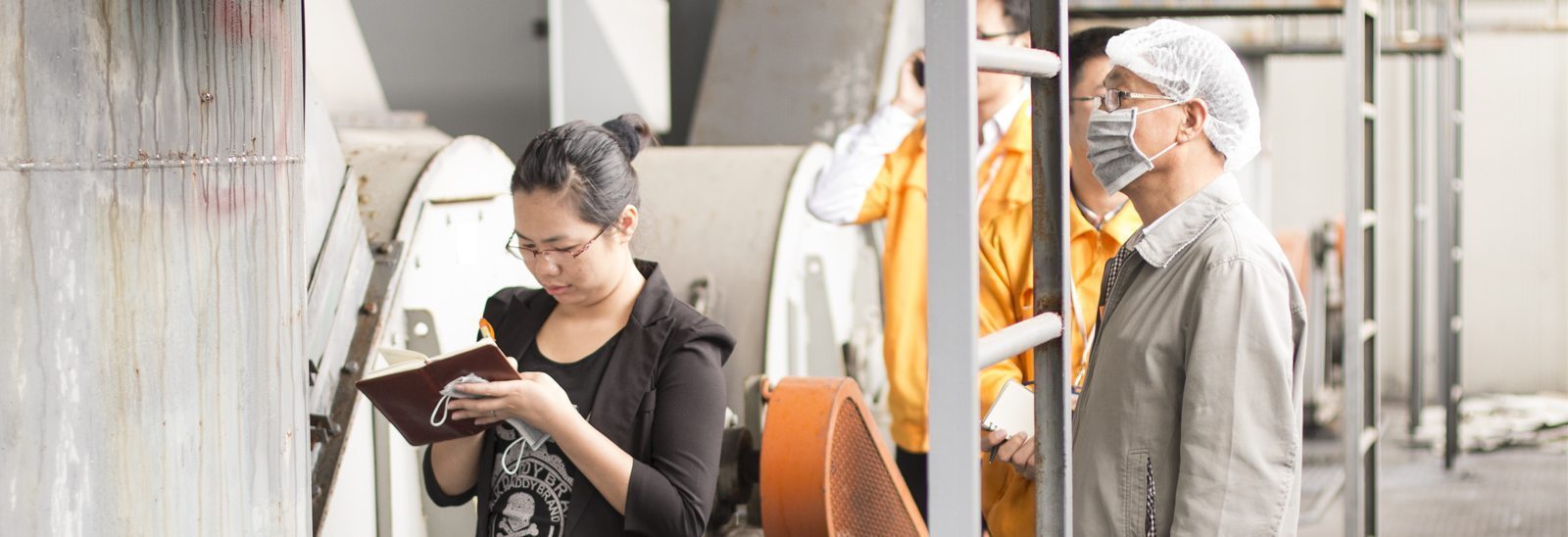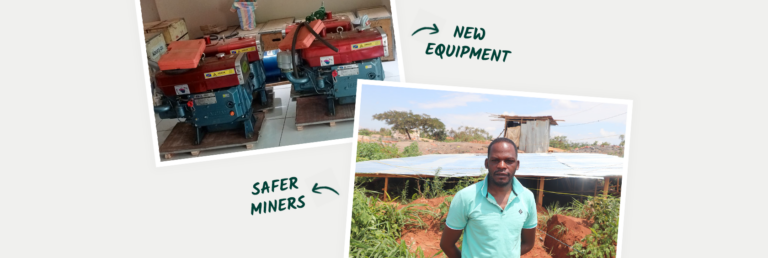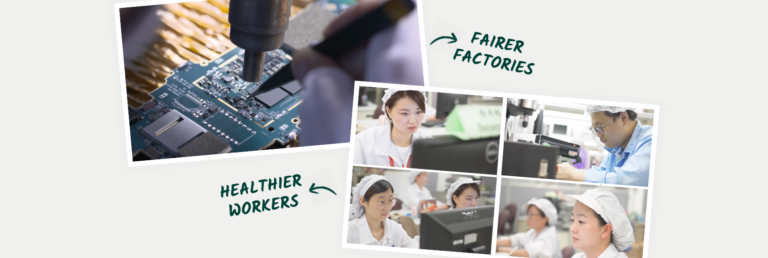Social Assessment Program begins at our manufacturer Hi-P
In October 2014, four team members of TAOS, our assessment partner, visited the facilities of Hi-P, the production partner for the next Fairphone. They spent three days on factory walkthroughs, numerous document reviews and interviewing workers in both the factory’s cafeteria and a private meeting room.
Read an update to this blog “Progress and challenges to improving working conditions with our Fairphone 2 manufacturer“.
TAOS went through all the relevant documentation from Hi-P, such as worker payrolls and company employment policies. The focus was to examine workplace dynamics like working hours and wages, as well as overall working conditions and health and safety procedures, while using local legal requirements and internationally recognized conventions such as the International Labor Organization (ILO) as a benchmark.
While this may sound intrusive in the daily operations of a factory, we don’t intend to “police” our production partner with these types of visits. We believe that an assessment:
1. Acts as a snapshot of the factory
2. Should be seen as a starting point
3. Presents challenges that are of a long-term and short-term nature
4. Requires that issues be handled with a tailored, systemic approach
As such, the social assessment provides us with a baseline to develop improvement plans and programs with the people who help put the Fairphone together. Setting out a clear and shared understanding of the current conditions is the starting point for a partnership built on trust and transparency.
Our goal with carrying out assessments is to get a better understanding of the deeper underlying social and environmental challenges, and then to work together with our production partner and third-party experts to address them in going further in the partnership.
The full assessment report is available with an additional section on the first steps for improvement going forward. Download the full report here. In this blog, you can read about some key findings and more on the process of the assessment itself.
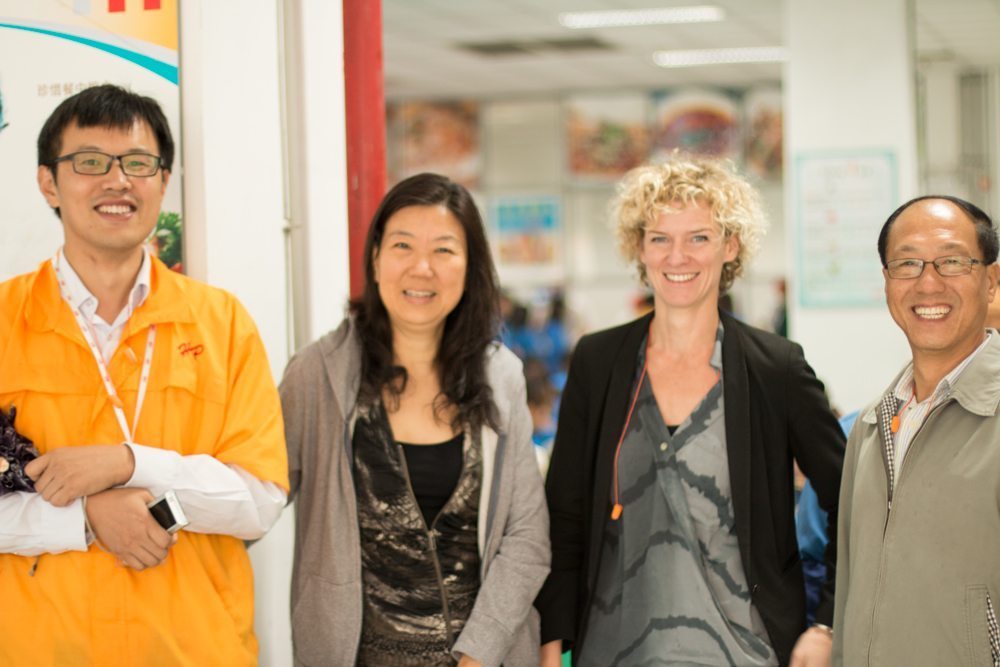
General observations and impression of the assessment
As we described previously in our path to finding our new production partner, Hi-P is a design manufacturer who specialize in wireless telecommunications and consumer electronics products. Headquartered in Singapore, they employ over 15,000 people throughout the world, spread out over 15 manufacturing plants and marketing and engineering support facilities.
The Fairphone will be assembled at Hi-P’s Suzhou location in China, a couple of hours west of Shanghai, that houses four facilities within it. We are working specifically at the EMS facility for the final assembly, officially named Hi-P (Suzhou) Electronics Co., Ltd. During the assessment visit in October, TAOS visited the Suzhou site looking specifically at this EMS facility.
At the end of the third intensive day on-site, TAOS was ready to share their initial findings.
A closing meeting was set up before TAOS’ departure to which Hi-P invited around 15 people, including general managers, business managers, employees from HR and EHS (Environmental Health and Safety) and the site’s labor union chairperson. A first round of sharing overall impressions showed that throughout the assessment process Hi-P dealt openly with our requests for transparency on a wide range of social and environmental issues.
Overall, TAOS observed a well-organized company with well-established documentation systems, which was therefore able to provide the assessors with required insights in company policies and documentation.
Reviews showed that workers receive wages at a monthly rate and that this is in accordance with the Chinese labor law. The factory provides free lunches, dinner allowance and a shuttle bus service for commuting between the factory and workers’ homes. This information was verified by worker interviews, who “in general gave positive feedback in regards to the factory’s working conditions.” (Source: TAOS report, Chapter V Conclusion)
However, as expected, the assessment also identified findings that need our close and on-going attention and improvement going forward with the partnership. There is no such thing as a 100% fair or perfect manufacturer, and we were expecting to find some points for discussion and improvement. Fairphone sees improvements as opportunities to work towards systemic change in the industry – starting first with our top-tier manufacturing partner.
Below we summarize key issues and in the following section we will elaborate on our approach to addressing them.
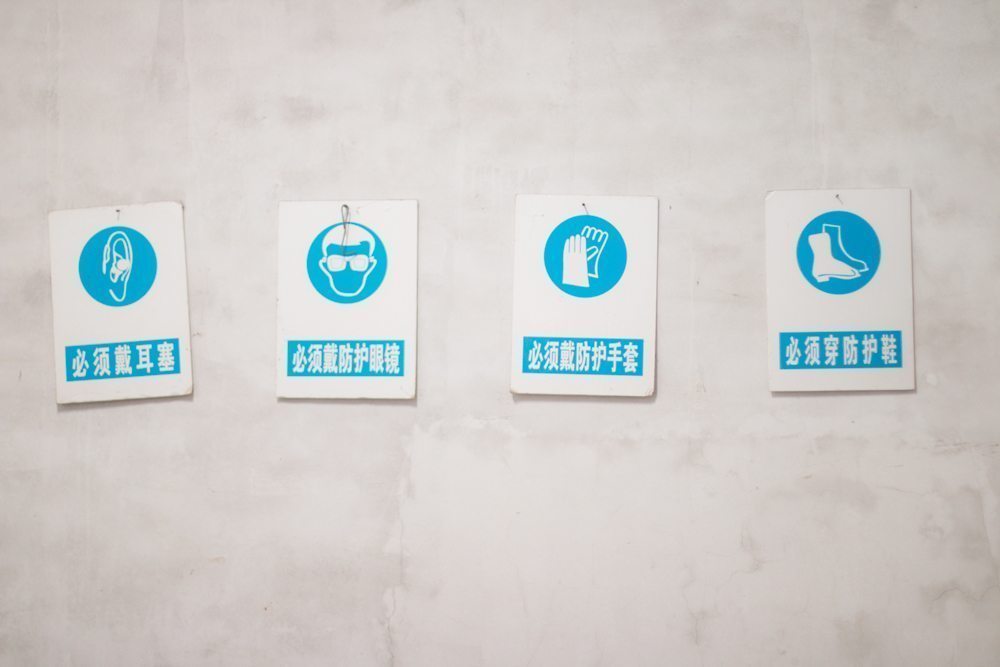
Issues arising from the first assessment:
Health and safety, working hours, wages and working conditions
TAOS identified several issues regarding daily health and safety operations on the work floor. The emergency evacuation routes, fire safety and necessary preventative measures were not all compliant as prescribed in applicable national and international regulations. For example, some exit doors did not swing outward (to allow for easier exit) and others were missing exit signs. Workers handling heat guns for small repairs were not wearing the required safety carbon masks, or insulated gloves, and one area where chemicals are used had no eye wash station. In some cases there were no posted explanatory posters of material safety data sheets (MSDS).
On the other hand, the assessment brought up systemic challenges that are recurring in the electronics industry. Most notable to us from the sample records of May to September 2014 show that working hours exceeded 60 hours per week (refer to the Ethical Trading Initiative’s Base Code) when production schedules were tight and there was a reported instance when some workers worked 28 days without a day off in July 2014. In addition to that, the workforce composition shows that an excessive portion of workers is not directly hired by Hi-P but are agency workers that are recruited by labor agencies. Working with labor agencies assumes that agency workers don’t benefit fully from the employment relationship. Hi-P has less control to provide agency workers with continuous job security since the employment relationship is held by the agency.
After reviewing payroll records and interviews with workers, TAOS confirmed that workers are compensated at monthly rates and that the base wage, at RMB 1530, complies with the local minimum wage requirement. Take-home wages, which are comprised of the base wage, a performance bonus, overtime wage, job subsidy, as well as meal and night shift allowances, are higher and range between 2700 and 3700/month. This is after deduction of a social insurance contribution. Overtime is compensated according to labor law and both agency workers – who are paid through agencies – and direct-hire workers are provided with the legally mandated benefits including social insurance and paid leave and holidays.
To better understand what the current wage means for workers, the next step could be to research living expenses for the area. This would give a reference point for living wages in the region where Fairphones are made in comparison to other manufacturing facilities.
As with our first Worker Welfare Fund, this fund would give training to workers to empower their skills and knowledge to negotiate improvements, including wages.
And in turn, give them concrete, financial resources to invest in what they find important. More on wages in Section II General Assessment Observations.
The last point to highlight is the critical issue of genuine and effective worker representation. The facility has a Worker Representative Congress (WRC), suggestion boxes and an open-membership labor union, but the interviews indicate that workers feel that the issues they raise are not always acted upon by management in a satisfactory way to workers. Also, not all workers that are recruited by labor agencies say to have been properly informed about the option to join the site’s labor union.
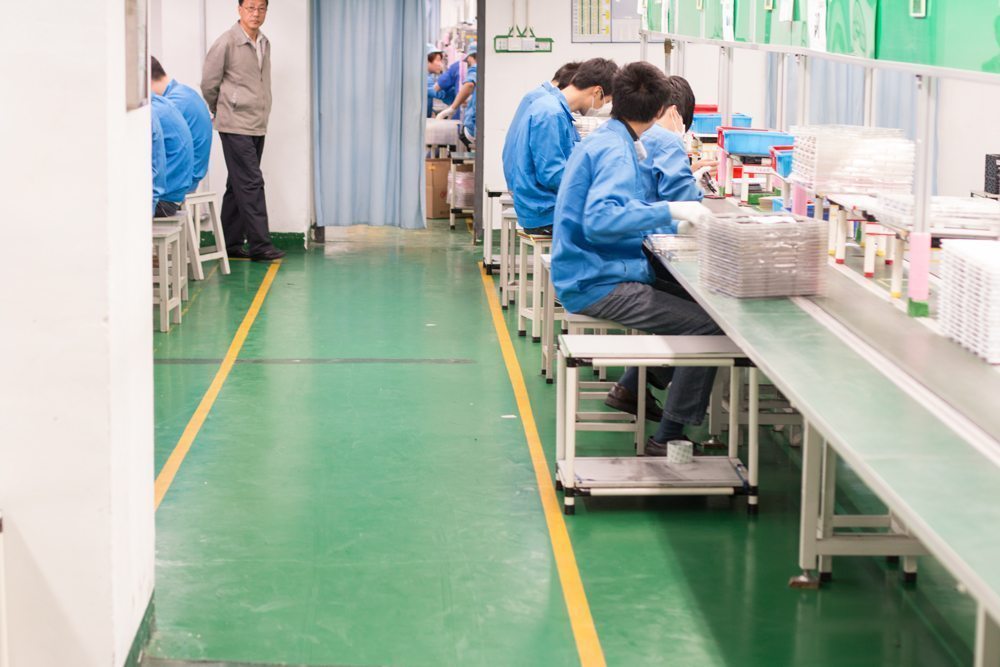
Partnership improvement and worker empowerment
We take the above-mentioned findings seriously and they require strong commitment and follow-up monitoring both by Hi-P and Fairphone. For most of the issues, especially those relating to daily operations and health and safety, Hi-P worked with TAOS following the weeks after the assessment to create a list of actions to address them.
Many of the issues mentioned above have by now been addressed by Hi-P. Fairphone will follow-up on these actions and update the status of each issue with accompanying sources for verification in the Improvement Plan.
Following up on the first assessment, Fairphone team members, most often our project manager Mulan, are regularly on-site to monitor progress. Lastly, TAOS will make additional unannounced follow-up visits to validate the status over the course of our partnership.
The Improvement Plan is expected to improve findings that require relatively simple fixes, like changing emergency arrows, providing protective masks, and installing eye wash stations. More importantly, however, the assessment also identified systemic and interrelated challenges, like fluctuating and sometimes excessive working hours. These issues require more time and commitment to bring about improvements from both Hi-P and Fairphone.
Fairphone believes that in order to really structurally address systemic problems, the involvement and empowerment of the workers themselves is crucial.
Therefore, in the coming months, we will be working on establishing a Worker Welfare Fund in Hi-P as a first step to empower workers by providing training and skills development, establishing financial resources and setting up channels for them to formalize lines of communication.
By buying the Fairphone, Fairphone owners will be contributing to this Worker Welfare Fund (WWF). The fund will have similar objectives as the WWF we set up with our previous production partner Guohong, including facilitating worker representation and improving worker well-being, but it will be tailored for a bigger site with different governance structures. The Suzhou site houses four different Hi-P facilities in one building and shares several areas, such as the cafeteria. We therefore decided that the WWF should benefit all workers from the four facilities in the site, not only the EMS facility that is responsible for final assembly of the Fairphone. This new set-up will require research and many conversations with management and workers, as well as professional training.
In the meantime, Hi-P is implementing their own internal plan to reduce the percentage of agency workers in the facility and to reduce overtime to a maximum of 60 hours/week with one day off in seven days. While Fairphone alone, as a small client of Hi-P, won’t change these issues overnight, one example of a step in the right direction would be to adapt our purchasing behavior as a buyer to have timely and accurate production forecasts for Hi-P. That way, Fairphone and Hi-P could better define the production schedule for the next model of Fairphone, aiming to create stability in the production, workforce and working hours to monitor fluctuation as much as possible.
Continuing progress before production begins
After assessing all the requirements we need from a production partner – on technical match, attitude toward transparency, open collaboration and social and environmental performance – we feel that Hi-P understands our value proposition and we can confidently take the first step working together to address these systemic issues. Going forward we will keep you posted about the progress we are making.
In the next few months, you can expect to read more about the findings from the social assessment improvements, the Worker Welfare Fund, training and other activities to tackle outstanding issues and the challenges that we encounter in addressing them.
Lastly, while this blog concerns our first-tier supplier, it doesn’t mean we leave it at that. The decision to invest in our own design also presents the ability to have more influence in selecting sub-suppliers and engaging with them. We are already reaching out and further engaging with some of the component manufacturers to explore opportunities, for example, in sourcing more responsible minerals and developing other types of worker empowerment projects. We will be delivering information to keep you informed going further in opening up the Fairphone value chain.
